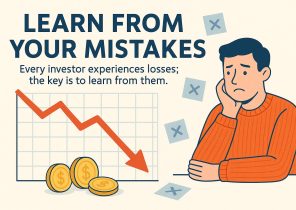Understanding High-Risk Investment Schemes
High-risk, get-rich-quick schemes have existed for decades, often presenting themselves under the guise of legitimate investments. Although these opportunities may appear promising by offering high returns with minimal effort, they can be perilous. It is wise to proceed with caution if an offer appears too good to be true.
Characteristics of High-Risk Schemes
Recognizing common traits among high-risk investment schemes is essential for their identification and avoidance:
Pyramid and Ponzi Schemes
One distinctive feature of such schemes is their reliance on a constant influx of new participants. Pyramid schemes require members to recruit others to earn financial returns, creating a hierarchical structure where returns trickle up to earlier recruits. Similarly, Ponzi schemes generate returns for older investors using the capital of new investors, rather than legitimate profit from business operations. Both rely on continuous recruitment or capital input to sustain payouts, eventually collapsing as recruitment dwindles.
Unrealistic Returns
Offers promising returns that far exceed typical market performance often signal deceit. In the world of investments, high potential yields usually correlate with high risk. This balance of risk versus return is central to investment theory and serves as a crucial metric for assessing investment opportunities. Historically, any claim of large, instantaneous gains without considerable risk should prompt caution.
Lack of Transparency
Legitimate investments are marked by clear terms and accessible information. If details are shrouded in complexity or presented vaguely, this is cause for suspicion. The absence of transparency not only obscures the true nature of the investment but also prevents investors from making well-informed decisions. Scrutinizing the clarity of an investment’s terms and the availability of its information is a vital step in discerning its legitimacy.
Pressure Tactics
Another hallmark of high-risk investment schemes is the use of urgency and pressure tactics, aiming to accelerate commitment from potential investors. Tactics such as imposing artificial deadlines or invoking a fear of missing out on an exclusive opportunity are used to dissuade individuals from conducting due diligence. This rush-to-sign approach can coax individuals into making impulsive decisions, bypassing critical evaluation and research.
Consequences of Engaging in High-Risk Schemes
Diving into these high-risk schemes can lead to substantial financial losses. The promises of great returns often lure unsuspecting investors into parting with considerable sums of money, which are then irretrievably lost when the scheme inevitably fails. Aside from monetary implications, engaging in potentially fraudulent or illegal schemes can also expose participants to legal consequences. Involvement in such schemes, even unknowingly, can result in legal scrutiny and liability.
Protecting Yourself from Fraudulent Schemes
Awareness and due diligence are your primary defenses against these treacherous ventures. Consider the following protective measures:
Verify the Investment
The first line of defense is to investigate the authenticity of the investment in question. Verification can be done by checking if the investment is registered with appropriate financial regulatory bodies. For instance, in the United States, the U.S. Securities and Exchange Commission (SEC) is a critical resource for verifying investment legitimacy and transparency. Ensuring that an investment is on a regulatory body’s radar provides a level of security and compliance.
Understand the Risk
Acknowledging that all investments inherently carry some degree of risk is essential. Comprehending these risks allows potential investors to anticipate various outcomes, helping them make well-informed decisions. Consider an investment’s risk profile—evaluate the variables that could impact its performance, and compare this against your own risk tolerance. This knowledge aids in calibrating expectations and preparing mentally and financially for potential market fluctuations.
Seek Professional Advice
If uncertainties about an investment persist, seeking guidance from financial advisors or professionals can offer insightful perspectives. Professionals can deliver an unbiased evaluation of the investment’s risk and return potential. Engaging their expertise not only provides a second opinion but also adds credibility to your decision-making process. Their insights can illuminate aspects of an investment that might not be immediately apparent to inexperienced investors.
Conclusion
The allure of high returns with little effort makes certain investment offers enticing—but caution is a necessary companion in the world of investments. Evaluating offers critically, performing thorough due diligence, and maintaining informed skepticism are crucial to identify and avoid high-risk schemes. Bearing in mind that opportunities, which seem exceedingly promising often bear hidden risks, is fundamental. Making informed decisions is integral to securing financial stability and health, shielded from the pitfalls posed by fraudulent schemes.
This article was last updated on: June 16, 2025








